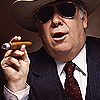Horseracing Tips
Horseracing is among the most widely attended U.S. spectator sports. It is also a major professional sport in Canada, Great Britain, Ireland, Western Europe, Australia, New Zealand, South Africa, and South America. The most popular form of the sport is the racing of mounted thoroughbred horses over flat courses at distances from three-quarters of a mile to two miles.
Horseracing's beginnings can be traced back to the 12th century, when English knights returned home from the Crusades with Arab horses. Over the next 400 years, breeding between imported Arab stallions and English mares produced horses that combined speed and endurance.
Horseracing became a professional sport as early as 1702 to 1714. Race courses sprang up all over England and offered large purses to attract the best horses. The British settlers brought horses and horseracing to America, with the first American race track built in Long Island in 1665. The development of organized racing did not arrive to America until after the Civil War. In 1894, the American Jockey Club was formed to govern the sport.
The introduction of pari-mutuel betting for the Kentucky Derby signaled a renaissance for the sport after stumbling badly in the early 1900s. At the end of World War I, prosperity brought spectators flocking to race tracks. The sport prospered until World War II, declined in popularity during the 1950s and 1960s, enjoyed a resurgence in the 1970s and declined in the late 1980s. It is currently enjoying another renaissance, thanks to the popularity of horses like War Emblem, Funny Cide, and the legendary Seabiscuit.
Today, thoroughbred tracks exist in about half the states in the United States. Public interest in the sport focuses primarily on major thoroughbred races such as the Triple Crown (Kentucky Derby, Preakness, Belmont Stakes) and the Breeders' Cup.
Place a bet on your favorite horse or greyhound now!




 Sports Betting Strategies Learn about point spreads, parlays, money lines, teasers and totals. Get expert tips on placing sports bets from John Sparks, the country's premier betting guru...
Sports Betting Strategies Learn about point spreads, parlays, money lines, teasers and totals. Get expert tips on placing sports bets from John Sparks, the country's premier betting guru... Horseracing Tips Win, place or show? Exacta, trifecta or quinella? David Dawson explains the ins and outs of horseracing and shares his wisdom on betting on winning horses...
Horseracing Tips Win, place or show? Exacta, trifecta or quinella? David Dawson explains the ins and outs of horseracing and shares his wisdom on betting on winning horses... Online Casino
Online Casino Poker Strategies Taxas Hold em. Five Card Draw. Omaha High. Ryan Prose explains the nuances of the hottest poker variants on the planet to date and shares his strategies on folding or going all in...
Poker Strategies Taxas Hold em. Five Card Draw. Omaha High. Ryan Prose explains the nuances of the hottest poker variants on the planet to date and shares his strategies on folding or going all in...